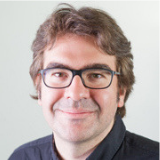Please note: this event has passed
Please join Professor Carl-Philipp Heisenberg from the Institute of Science and Technology Austria for a Force Talk entitled 'Morphogen gradient orchestrates pattern-preserving tissue morphogenesis via motility-driven (un)jamming'
Abstract
Embryo development requires both biochemical signalling generating patterns of cell fates and active mechanical forces driving tissue shape changes. Yet, how these fundamental processes are coordinated in space and time, and, especially, how tissue patterning is preserved despite the complex cellular flows occurring during morphogenesis, remains poorly understood. Here, we show that a Nodal/TGF-β morphogen gradient orchestrates pattern-preserving mesendoderm internalisation movements during zebrafish gastrulation by triggering a motility-driven (un)jamming transition. We find that graded Nodal signalling, in addition to its highly conserved role in mesendoderm patterning, mechanically subdivides the tissue into a small fraction of highly protrusive leader cells able to locally unjam and thus autonomously internalise, and less protrusive followers, which remain jammed and need to be pulled inwards by the leaders. Using minimal particle-based simulations and experimental perturbations, we further show that this binary mechanical switch, when combined with Nodal-dependent preferential adhesion coupling leaders to followers, is critical for triggering collective and orderly mesendoderm internalisation, thus preserving tissue patterning. This provides a simple, yet quantitative, theoretical framework for how a morphogen-encoded (un)jamming transition can bidirectionally couple tissue mechanics with patterning during complex three-dimensional morphogenesis.
_______________________________________________________________________________

